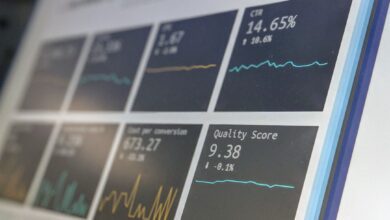Mastering Arbitrage Trading: Strategies to Profit from Price Differences in Forex, Stocks, and Cryptos

Arbitrage trading has emerged as a powerful strategy in the world of finance, allowing savvy traders to capitalize on price discrepancies across various markets. This method, which involves simultaneously buying and selling an asset to exploit differences in its price, is not limited to just one domain; it spans across forex trading, stock trading, crypto trading, and beyond. As the landscape of online trading platforms evolves, opportunities for arbitrage trading become more accessible, offering potential profits for both seasoned professionals and newcomers alike.
In this article, we will delve into a comprehensive overview of arbitrage trading, exploring how traders can effectively navigate the complexities of price exploitation in different financial markets. We will outline key strategies for successful arbitrage in various trading arenas, including day trading, swing trading, and high-frequency trading. Furthermore, we will emphasize the importance of risk management and technical analysis, essential components that can significantly enhance your trading success. Whether you’re interested in options trading, futures trading, or commodities trading, understanding the nuances of arbitrage can provide you with a competitive edge. Join us as we uncover the intricacies of this fascinating trading strategy and equip you with the knowledge to thrive in the dynamic world of finance.
- 1. Understanding Arbitrage Trading: A Comprehensive Overview of Price Exploitation Across Various Markets
- 2. Key Strategies for Successful Arbitrage Trading in Forex, Stocks, and Cryptos
- 3. Risk Management and Technical Analysis: Essential Components of Effective Arbitrage Trading
1. Understanding Arbitrage Trading: A Comprehensive Overview of Price Exploitation Across Various Markets
Arbitrage trading is a sophisticated strategy used by traders to exploit price discrepancies across various markets, allowing them to profit from the mismatches. This practice can occur in multiple forms, including stock trading, forex trading, options trading, and even crypto trading. Understanding how arbitrage works is essential for traders looking to implement effective trading strategies while managing risks.
At its core, arbitrage involves buying an asset in one market at a lower price and simultaneously selling it in another market at a higher price. This price exploitation can be observed in various financial instruments, from commodities trading to derivatives trading. For instance, a trader might notice that the price of a specific stock is lower on one online trading platform compared to another. By executing a quick buy-sell transaction, the trader capitalizes on the price difference before it corrects itself.
In the world of day trading and swing trading, arbitrage opportunities often arise due to market inefficiencies. Traders who engage in high-frequency trading or algorithmic trading can take advantage of these fleeting moments, employing technical analysis and market analysis to identify potential profits. These traders utilize sophisticated algorithms to scan markets and execute trades at lightning speed, often making multiple trades within seconds.
Arbitrage can also be applied to futures trading and options trading, where traders might exploit differences in pricing between underlying assets and their derivatives. For example, if the price of an ETF trading is lower than the value of the underlying assets, a trader can buy the ETF and sell the underlying assets for a profit.
Another area where arbitrage is prevalent is in the realm of crypto trading. The volatility of cryptocurrencies often leads to significant price discrepancies across exchanges, presenting opportunities for traders to engage in arbitrage. In this fast-paced environment, traders must employ effective risk management and trading psychology to ensure their strategies remain profitable.
Moreover, arbitrage trading is not limited to traditional markets; it extends to energy trading and commodities trading as well. By understanding the dynamics of supply and demand, traders can exploit price differences across regions or markets.
In conclusion, arbitrage trading offers a unique pathway for traders to profit from market inefficiencies. Whether through leverage trading, margin trading, or utilizing CFD trading, the key to successful arbitrage lies in understanding market analysis and employing the right trading strategies. By remaining vigilant and responsive to market movements, traders can capitalize on these opportunities while effectively managing their risks.
2. Key Strategies for Successful Arbitrage Trading in Forex, Stocks, and Cryptos
Arbitrage trading is a sophisticated strategy that capitalizes on price discrepancies across different markets, enabling traders to achieve profit with minimal risk. To successfully navigate the realms of forex trading, stock trading, and crypto trading, traders must employ specific strategies that enhance their arbitrage opportunities.
One effective strategy is to leverage technology for high-frequency trading. Utilizing algorithmic trading systems can help traders execute trades within microseconds, ensuring they capitalize on fleeting price differences before they disappear. As markets become increasingly efficient, this speed can be the difference between profit and loss in trading.
Another essential strategy is market analysis, which involves both technical analysis and fundamental analysis. By understanding price movements and market trends, traders can identify potential arbitrage opportunities. For instance, in stock trading, discrepancies may arise when a stock is priced differently on various exchanges. Traders can buy low on one platform and sell high on another, effectively executing a risk-free transaction.
Risk management is also crucial when engaging in arbitrage trading. Traders should implement strategies such as setting stop-loss orders to protect against adverse price movements. Moreover, understanding the implications of margin trading and leverage trading can help traders manage their exposure and maximize their returns without exposing themselves to undue risk.
For those involved in crypto trading, arbitrage opportunities can often be found due to the volatility and varying prices across different exchanges. Traders can adopt scalping techniques to quickly exploit small price differences, ensuring they remain ahead in a competitive market.
In options trading or futures trading, traders can utilize derivatives trading strategies to hedge against risks and further exploit arbitrage opportunities. This approach allows for more sophisticated trading strategies that can capture profit during market inefficiencies.
Lastly, social trading and copy trading can be advantageous for those new to arbitrage. By following experienced traders who adeptly navigate arbitrage opportunities, novices can learn effective strategies while minimizing their risks.
In conclusion, successful arbitrage trading requires a blend of technology, robust market analysis, effective risk management, and an understanding of trading psychology. By employing these strategies, traders can effectively exploit price differences across markets and enhance their trading performance across forex, stocks, and crypto markets.
3. Risk Management and Technical Analysis: Essential Components of Effective Arbitrage Trading
Effective arbitrage trading requires a comprehensive understanding of risk management and technical analysis, which are essential for navigating the complexities of various trading markets. By leveraging these components, traders can enhance their chances of profit while minimizing potential losses.
Risk management is vital in all forms of trading, including stock trading, forex trading, and options trading. It involves setting clear parameters for trade entries and exits and employing strategies to protect capital. Traders should determine their risk tolerance before executing any trades, particularly in high-risk environments such as crypto trading and futures trading. Key risk management strategies include:
– **Diversification:** Spread investments across different markets, such as commodities trading and index trading, to mitigate the impact of a poor-performing asset.
– **Position Sizing:** Adjust the size of each trade according to risk levels, ensuring that no single trade jeopardizes the overall trading account.
– **Stop-Loss Orders:** Implement stop-loss orders to limit potential losses on trades, especially in fast-moving markets like day trading and scalping.
Technical analysis complements risk management by providing tools to analyze price movements and identify trading opportunities. Traders can utilize charts, indicators, and patterns to forecast market trends and make informed decisions across various trading strategies, including algorithmic trading and high-frequency trading. Essential elements of technical analysis include:
– **Chart Patterns:** Recognizing patterns such as head and shoulders or flags can signal potential price movements, aiding traders in executing timely arbitrage opportunities.
– **Indicators:** Tools like the Moving Average Convergence Divergence (MACD) or Relative Strength Index (RSI) help traders gauge market momentum, which is crucial for effective swing trading and margin trading.
– **Volume Analysis:** Analyzing trading volume provides insights into market strength and can help traders confirm trends before executing trades.
Incorporating both risk management and technical analysis into arbitrage trading strategies allows traders to navigate the volatility of online trading platforms confidently. By understanding the interplay of these elements, traders can enhance their trading psychology, make data-driven decisions, and ultimately increase their chances of capitalizing on price discrepancies across markets. Whether engaging in CFD trading, binary options, or energy trading, these foundational components are indispensable in achieving sustained trading success.
In conclusion, arbitrage trading presents a unique opportunity for traders to capitalize on price discrepancies across various markets, from forex and stocks to cryptocurrencies and commodities. By understanding the core principles of arbitrage, traders can develop effective strategies that leverage market inefficiencies for profit. Incorporating robust risk management techniques and technical analysis is crucial in navigating the complexities of trading, whether it be through high-frequency trading or more traditional methods like day trading and swing trading.
As you explore the world of arbitrage trading, consider the diverse trading strategies available, including scalping, algorithmic trading, and copy trading, to enhance your approach. Remember that successful trading requires not only a solid grasp of fundamental and technical analysis but also a keen awareness of trading psychology. Ultimately, by staying informed and adaptable, you can effectively exploit price differences and position yourself for success in the ever-evolving landscape of online trading platforms.
References:
A comprehensive list of sources used in the article would be included here.





